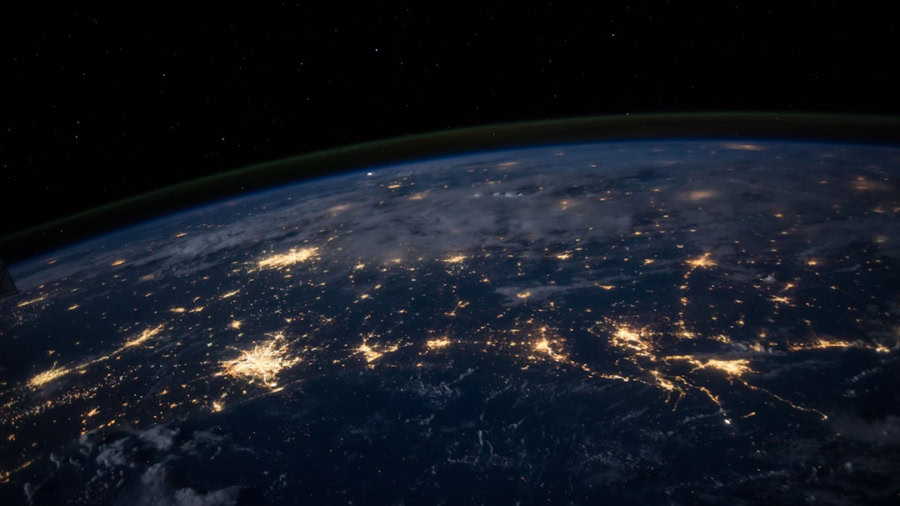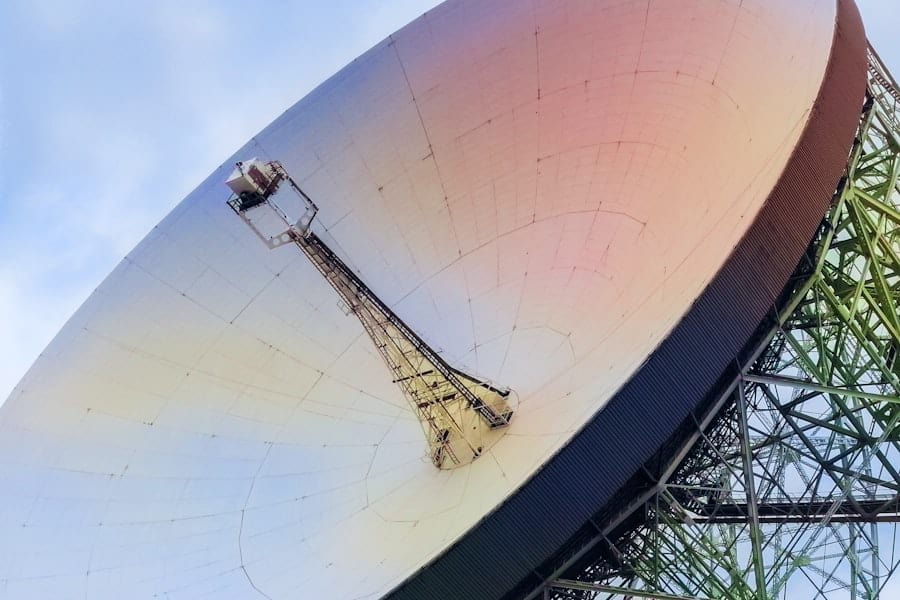The advent of the Internet of Things (IoT) has revolutionized various sectors, and space exploration is no exception. IoT technology refers to the interconnection of devices and systems through the internet, enabling them to collect, share, and analyze data in real-time. In the context of space station monitoring, IoT plays a pivotal role in enhancing operational efficiency, ensuring safety, and facilitating scientific research.
The International Space Station (ISS), a collaborative project involving multiple space agencies, serves as a prime example of how IoT can be integrated into space missions to monitor environmental conditions, equipment status, and astronaut health. As space missions become increasingly complex and ambitious, the need for robust monitoring systems has never been more critical. Traditional monitoring methods often rely on manual data collection and analysis, which can be time-consuming and prone to human error.
IoT technology addresses these challenges by automating data collection through a network of interconnected sensors and devices. This automation not only streamlines operations but also provides real-time insights that are essential for decision-making in the unique environment of space.
Key Takeaways
- IoT technology plays a crucial role in monitoring the space station environment, providing real-time data for analysis and decision-making.
- Various IoT devices and sensors, such as temperature sensors, air quality monitors, and motion detectors, are used to collect data in space station monitoring.
- The advantages of using IoT technology in space station monitoring include improved efficiency, cost savings, and enhanced safety for astronauts.
- Challenges and limitations of IoT in space station monitoring include potential cybersecurity threats, data accuracy, and the need for continuous maintenance.
- Case studies of IoT technology in space station monitoring demonstrate its effectiveness in ensuring the well-being of astronauts and the proper functioning of equipment in space.
The Role of IoT in Space Station Environment Monitoring
The environment aboard a space station is vastly different from that on Earth, characterized by microgravity, radiation exposure, and limited resources. Monitoring these conditions is crucial for the safety and well-being of astronauts as well as the integrity of scientific experiments. IoT technology facilitates continuous monitoring of various environmental parameters such as temperature, humidity, air quality, and radiation levels.
By employing a network of sensors strategically placed throughout the space station, data can be collected and transmitted in real-time to ground control and onboard systems. For instance, air quality is a significant concern in the confined space of a space station. IoT-enabled sensors can detect levels of carbon dioxide, volatile organic compounds, and other harmful gases.
This data is vital for maintaining a breathable atmosphere for astronauts. If sensor readings indicate a rise in carbon dioxide levels beyond acceptable thresholds, automated systems can trigger ventilation protocols or alert crew members to take corrective actions. Such proactive measures are essential for ensuring astronaut safety and optimizing living conditions in space.
IoT Devices and Sensors Used in Space Station Monitoring
A diverse array of IoT devices and sensors is employed in space station monitoring to gather critical data. These devices range from simple environmental sensors to complex systems capable of analyzing multiple parameters simultaneously. For example, temperature and humidity sensors are essential for monitoring the living quarters and laboratories aboard the ISS.
These sensors provide real-time feedback on environmental conditions, allowing astronauts to make necessary adjustments to maintain comfort and safety. In addition to environmental sensors, wearable IoT devices are increasingly being utilized to monitor astronaut health. These devices can track vital signs such as heart rate, body temperature, and activity levels.
By continuously collecting health data, medical personnel on Earth can monitor astronauts’ well-being and respond promptly to any anomalies. Furthermore, advanced biosensors can analyze biological samples in real-time, providing insights into the physiological effects of long-duration spaceflight on human health.
Advantages of Using IoT Technology in Space Station Monitoring
The integration of IoT technology into space station monitoring offers numerous advantages that enhance mission success and astronaut safety. One of the primary benefits is the ability to collect vast amounts of data continuously.
For instance, by analyzing historical data on air quality fluctuations aboard the ISS, researchers can develop predictive models that anticipate changes in environmental conditions. Another significant advantage is the automation of monitoring processes. Traditional methods often require manual checks and interventions, which can be labor-intensive and prone to oversight.
IoT technology automates these processes, allowing for remote monitoring and control. This not only reduces the workload for astronauts but also minimizes the risk of human error. Automated alerts can notify crew members or ground control when parameters exceed predefined thresholds, ensuring timely responses to potential hazards.
Challenges and Limitations of IoT in Space Station Monitoring
Despite its many advantages, the implementation of IoT technology in space station monitoring is not without challenges. One major concern is the reliability of communication systems in the harsh environment of space. The vast distances involved can lead to latency issues and signal degradation, which may hinder real-time data transmission.
Additionally, the potential for hardware malfunctions due to radiation exposure poses a significant risk to the integrity of IoT devices. Another challenge lies in the integration of diverse systems and technologies. The ISS is equipped with a multitude of legacy systems that may not be compatible with modern IoT solutions.
Ensuring seamless communication between these disparate systems requires careful planning and engineering expertise.
Protecting sensitive data from unauthorized access is paramount for maintaining mission integrity.
Case Studies of IoT Technology in Space Station Monitoring
Several case studies illustrate the successful application of IoT technology in space station monitoring. One notable example is NASA’s use of smart sensors aboard the ISS to monitor air quality. These sensors continuously measure levels of carbon dioxide and other gases, providing real-time data that informs life support system adjustments.
The implementation of this technology has significantly improved air quality management aboard the station, contributing to astronaut health and comfort. Another compelling case study involves wearable health monitoring devices used by astronauts during missions. For instance, during the recent Artemis missions, astronauts were equipped with advanced biosensors that tracked their physiological responses to microgravity conditions.
Data collected from these devices was transmitted back to mission control for analysis, allowing researchers to study the effects of long-duration spaceflight on human health more comprehensively. This real-time health monitoring capability has proven invaluable for ensuring astronaut safety during extended missions.
Future Developments and Trends in IoT for Space Station Monitoring
The future of IoT technology in space station monitoring holds exciting possibilities as advancements continue to emerge. One anticipated trend is the development of more sophisticated AI algorithms that can analyze vast datasets generated by IoT devices. These algorithms could enhance predictive analytics capabilities, allowing for proactive measures to be taken before potential issues arise.
For example, AI could analyze patterns in environmental data to forecast changes in air quality or equipment performance. Moreover, advancements in miniaturization and energy efficiency will likely lead to the creation of smaller, more powerful sensors that can be deployed throughout the space station without adding significant weight or power demands. These next-generation sensors could provide even more granular data on environmental conditions and astronaut health, further enhancing monitoring capabilities.
Additionally, as space exploration expands beyond low Earth orbit into deeper space missions, robust IoT solutions will be essential for maintaining safe living conditions in more challenging environments.
The Impact of IoT on Space Station Monitoring
The integration of IoT technology into space station monitoring represents a significant leap forward in ensuring astronaut safety and mission success. By enabling real-time data collection and analysis through interconnected devices and sensors, IoT enhances our understanding of the unique challenges posed by living and working in space. As we continue to explore new frontiers beyond our planet, the role of IoT will undoubtedly expand, paving the way for safer and more efficient space missions.
The ongoing evolution of IoT technology promises to address existing challenges while unlocking new opportunities for scientific discovery and exploration. As we look toward future missions to Mars and beyond, the lessons learned from implementing IoT solutions aboard the ISS will serve as a foundation for developing advanced monitoring systems that can operate effectively in even more demanding environments. The impact of IoT on space station monitoring is profound; it not only enhances our current capabilities but also shapes the future landscape of human exploration beyond Earth.
A related article to How IoT Technology is Being Used in Space Station Monitoring is “The Best Tech Products 2023” which discusses the latest and most innovative tech products that are shaping the future. To learn more about the exciting advancements in technology, check out the article here.
FAQs
What is IoT technology?
IoT, or Internet of Things, refers to the network of physical devices, vehicles, and other items embedded with electronics, software, sensors, and network connectivity that enables them to collect and exchange data.
How is IoT technology being used in space station monitoring?
IoT technology is being used in space station monitoring to collect and transmit data from various sensors and equipment on the space station. This data is then analyzed to monitor the station’s systems, environmental conditions, and astronaut health and safety.
What are some specific examples of IoT technology used in space station monitoring?
Examples of IoT technology used in space station monitoring include sensors for monitoring air quality, temperature, pressure, radiation levels, and equipment performance. These sensors are connected to a network that allows for real-time data collection and analysis.
What are the benefits of using IoT technology in space station monitoring?
The benefits of using IoT technology in space station monitoring include improved efficiency in data collection and analysis, early detection of potential issues or malfunctions, and the ability to remotely monitor and control systems. This ultimately contributes to the safety and well-being of astronauts on the space station.
Are there any challenges or limitations to using IoT technology in space station monitoring?
Challenges and limitations to using IoT technology in space station monitoring may include the need for robust and reliable communication networks, ensuring the security of data transmission, and the potential for technical malfunctions in the IoT devices themselves. These challenges require careful consideration and mitigation strategies.



